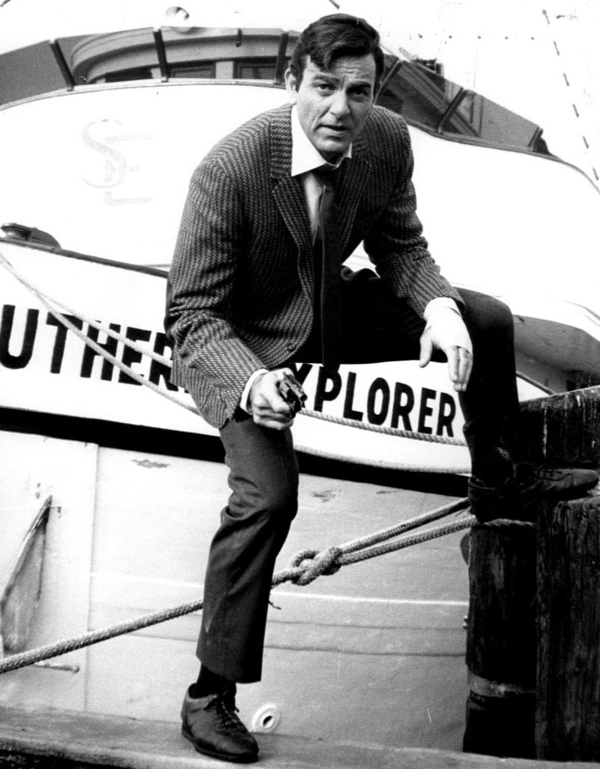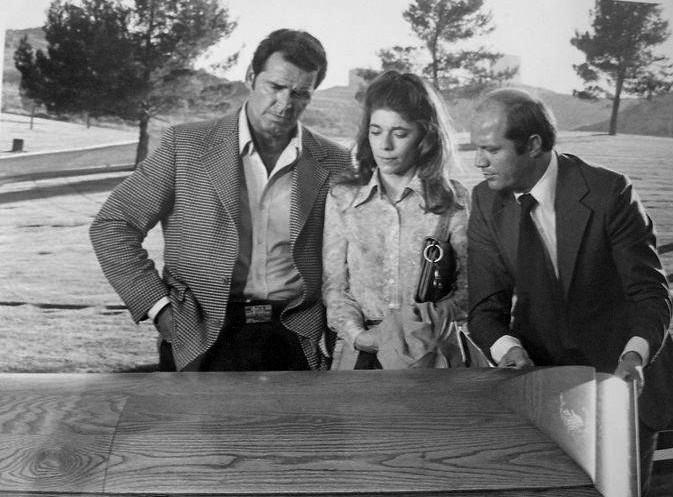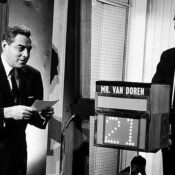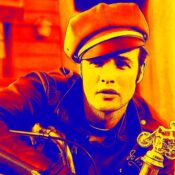Since Americans first welcomed television into their homes, every decade has been characterized by a particular genre, whether it was the live variety and drama shows of the 1950s or the sitcom explosion of the 1980s. In the 1970s, that genre was the detective show. One of the most popular, Barnaby Jones, debuted 50 years ago this week, and America’s love of the format snowballed from there. Here’s how it all went down.
Police and/or detective shows were an early development in TV, owing to their popularity in both film and in print. The BBC had Telecrime as early as 1938, but the early prints of the show have been lost. NBC claims to have launched the first mystery TV series in the States; that was Barney Blake, Police Reporter, which ran in 1948. Westerns boomed during the 1950s and 1960s, but a few crime and detection shows still found a place on the schedule.

The 1970s boom was presaged by two shows that kicked off in 1967: Mannix and Ironside. Mannix was initially a high-concept show from genre-friendly Desilu Productions (who produced hits like Star Trek and Mission: Impossible). At the beginning of the show, detective Joe Mannix (Mike Connors) works for Intertect, a firm that uses computers to help solve crimes; but Mannix is an old-school detective who eschews the tech for old-fashioned detecting. By season two, Mannix has quit Intertect and the series settles into a more traditional P.I. vibe. Ironside also deployed a conceptual twist. Former San Francisco PD chief of detectives Robert T. Ironside (Perry Mason himself, Raymond Burr) is shot and paralyzed from the waist down, but being confined to a wheelchair doesn’t affect his keen detective skills. Ironside soon assembles a team to act as special consultants to SFPD, solving crimes on their own. Both shows settled in for long runs, each going for eight seasons and nearly 200 episodes.
Columbo needs to know “Just one more thing” (Uploaded to YouTube by Columbo)
As the ’60s moved into the ’70s, a formatting twist gave two more crime-solvers a shot. By programming “wheels” of rotating series of TV movies, networks had a chance to experiment and let the audience decide (via ratings) what shows might get more of a chance. The format paid off for NBC in 1970 by yielding a long-term hit in the form of McCloud and, after two earlier TV movie appearances, an enduring classic in Columbo. A third successful detective show, McMillan & Wife, soon hopped onto the wheel.
Then producer Quinn Martin got into the act with a quartet of shows launched in succession. Martin had already found great TV success with hits like The Fugitive and The F.B.I. Between 1970 and 1976, he had a whopping nine shows on the three major networks that were either built on P.I.s or police procedural formats. The first, Dan August, ran for 26 episodes on ABC between September 1970 and April 1971; August featured Burt Reynolds in the lead, but it was consistently beaten in the ratings by CBS’s Hawaii Five-0. After the show’s cancellation, Reynolds became a favorite talk-show circuit guest and landed one of his most famous roles in Deliverance. Somewhat hilariously, CBS acquired August and ran the whole series in both late night and prime time slots during 1973 and 1975 after Reynolds had exploded as a movie star.
In addition to August, Martin had rolled out Cannon, Banyon, The Streets of San Francisco, Barnaby Jones, The Manhunter, Caribe, Bert D’Angelo/Superstar, and Most Wanted by 1976. While several of those shows only managed a season, Cannon, The Streets of San Francisco, and Barnaby Jones held on. Streets was a police procedural that featured the popular teaming of Karl Malden and Michael Douglas, whereas Cannon showcased William Conrad as detective Frank Cannon. Cannon exists at an intersection of many of the tropes of the genre: he is a tough, street-smart veteran and former cop with a murdered family, but he’s also incredibly intelligent with interests that run to art and gourmet cooking. Cannon occasionally deployed the film noir vibe where the hero is mentally several steps ahead of the bureaucrats and law-enforcement officials that he would run into on cases.

As for Barnaby Jones, which debuted 50 years ago this month, it worked off of the P.I. template while also throwing in the twist of having an older-than-usual protagonist. Martin cast Buddy Ebsen in the lead, best known as loveable Jed Clampett from The Beverly Hillbillies. Ebsen’s Jones had retired as a private investigator, leaving his firm to his son, Hal. After his son’s murder, Jones comes out of retirement to re-open the firm alongside his son’s widow, his daughter-in-law Betty (Lee Meriwether); the pair solves Hal’s murder with special guest P.I. (early crossover alert!) Frank Cannon. At seven-and-a-half seasons, Jones had the longest run of any of Martin’s shows from the 1970s. Ebsen was the primary driver of that, with his steady screen presence and the quirks he brought to the character (favoring milk over liquor, for example). Jones and Cannon teamed up again in a 1975 crossover that saw the two-part story begin on Cannon and continue onto Barnaby Jones.
The opening credits for Kojak Season Five (Uploaded to YouTube by Shout! Factory)
Less than two months after Jones appeared, TV movie The Marcus-Nelson Murders introduced audiences to Kojak. Played by Telly Savalas, Kojak was instantly iconic. With his bald head, dark glasses, sharp suits, and (debuting in the first season) trademark lollipop, Kojak didn’t look like any other detective. Tough, unable to be corrupted, and thoroughly proud of his Greek heritage, Kojak stood out from the crowd. Kojak stayed in the Top 20 rated programs on TV through its first three seasons; the character was so popular that he was an action figure by season three. The series ran for five seasons, but returned in 1985 as a series of seven TV movies.
“Theme from Shaft” (Uploaded to YouTube by Isaac Hayes)
Toward the end of 1973, a famous fictional detective made jump from the big screen to the small. Yes, we’re just talkin’ about Shaft. John Shaft first appeared in the series of novels by Ernest Tidyman (and later, David F. Walker) that began in 1970. Shaft went to the movies in a big way in 1971, with Richard Roundtree in the title role and Gordon Parks in the director’s chair. The film was a zeitgeist-shaking hit, and Isaac Hayes’s “Theme from Shaft” won an Oscar. Shaft was seen as a crucial advancement for Black talent in Hollywood, and spawned two immediate theatrical sequels: Shaft’s Big Score! and Shaft in Africa. In October 1973, Roundtree took the character to CBS as part of The New CBS Tuesday Night Movie wheel. A new 90-minute Shaft TV film debuted every third week on that schedule, ultimately delivering seven installments. Over the decades, Roundtree has returned to the part in two further theatrical films, also starring Samuel L. Jackson, in 2000 and 2019.

By the 1973-1974 TV season, cops and P.I.s had emerged as the dominant dramatic force on the schedule. The only other format that had quite as many entries was the still en vogue celebrity-driven variety show. 1974 saw the arrival of two crime-solving ladies and one of the most beloved private investigators in the history of television. Get Christie Love! cast Teresa Graves in the title role; she was the second Black woman to be an American TV series lead, after Julia’s Diahann Carroll. The series kicked off with an ABC TV movie and rolled right into a regular slot. And although she was a police officer, rather than a detective, the undercover work of Angie Dickinson’s titular Police Woman, Pepper Anderson, made her exploits frequently feel more like a P.I. show. Dickinson was the first woman to play a woman in a police lead for an hour-long drama series (the first woman to headline a cop show was Beverly Garland in the syndicated 30-minute Decoy in 1957). While Love! only ran one season, Police Woman ran four and was frequently cited as the reason for an uptick in women seeking jobs with their local police departments.

Perhaps the zenith of the TV detective genre appeared in September 1974. Turning back the clock to a couple of decades earlier, James Garner was a decorated rifleman in the U.S. Army during the Korean War. He’d done some modeling in his younger days but got into acting after Korea. By 1957, he’d become a star on TV with the lead role in Maverick. That show ran until 1960, but creator Roy Huggins continued to nurse an idea about a Maverick-like character applying his effortless charm to a modern role. Huggins and Stephen J. Cannell eventually created the perfect 1970s vessel for a twist on Garner’s Maverick: P.I. Jim Rockford in The Rockford Files. The show was extremely popular and pulled in five Emmys over the course of its run (including one for Best Drama and a Best Actor win for Garner in 1977). The show’s theme by Mike Post and Pete Carpenter is widely regarded as one of the best of all time. The Rockford Files worked so well because it combined Garner’s rumpled appeal with the staples of California detective noir without dipping too far into cynicism; it was realistic about the duplicitous nature of people, but Rockford’s decent core and regular guy demeanor earned him fans as he struggled with both creditors and fistfights. Garner was roundly praised for his work ethic, genial attitude, and willingness to do his own stunts; the show was cancelled after six seasons when he physically had to slow down from injuries accumulated on set. However, after settling a legal dispute with Universal over unpaid royalties, Garner played Rockford in eight more TV movies throughout the 1990s.
The pilot episode of Charlie’s Angels (Uploaded to YouTube by Classic TV Rewind)
Over the next couple of years, Jim Rockford would be joined by other genre stand-outs like Charlie’s Angels, cop shows Starsky & Hutch and Baretta, and medical mystery Quincy, M.E. The original run of Rockford lasted until 1980, as did the original run of Barnaby Jones. By the time that Quincy ended in 1983, television had begun another overhaul. The rise of the 1980s sitcom was well-underway, and primetime dramas had veered toward a mix of soaps (Dallas, Knots Landing, Falcon Crest), high-concept twists on older drama formulas (St. Elsewhere), and more expansive action-adventure shows (The A-Team, Knight Rider). TV cops and P.I.s stuck around, of course, with some fare being lighter (Magnum, P.I., Simon & Simon, Hunter), while other creators delved into serialized drama (Hill Street Blues) or darker themes with a modern twist (Miami Vice).
The trailer for Poker Face (Uploaded to YouTube by Peacock)
In today’s TV landscape, P.I.’s still exist, of course. Acclaimed Knives Out writer/director Rian Johnson just debuted Poker Face on Peacock, and the Magnum, P.I. reboot series just moved from CBS to NBC. Police procedurals have become a dominant expression; in that environment, the modern Quinn Martin is Dick Wolf. In 2023, Wolf has nine shows on the air across NBC and CBS, accounting for three entire nights of network programming (those being his three Law & Order shows, the F.B.I. group, and the One Chicago programs). The outsized budgets, modern special effects, and creative freedom afforded by streaming services and pay networks has allowed for an explosion in fantasy, science fiction, and horror programming that wasn’t available in previous decades, which may have had an impact on why fewer traditional private investigator shows are being developed. But if anyone can lead the way today, it’s Johnson. He’s already proven that a compelling mystery, interesting suspects, and a magnetic lead can still make for a movie success. If Poker Face provides a boost for the genre, it wouldn’t be the first time that a TV hit led to dozens of imitators. When it comes to TV, that story has never been a mystery.
Become a Saturday Evening Post member and enjoy unlimited access. Subscribe now




Comments
And that was a really good thing Paul. Fred Silverman knew what he was doing. I watched every episode of Jones from the first to the last, including the spring & summer reruns. Cannon was a great series too, and Frank helped get the ball rolling in the first episode of Jones, definitely.
Barnaby Jones was really Buddy Ebsen’s signature series. The creators developed a very shrewd detective that was both completely different from Jed Clampett, yet retained just enough Jed flavoring that came so naturally to Buddy, and also utilized that folksy element in having the bad guys underestimate him (like Colombo), but to a much lesser extent.
Although Jones was L.A. based, the stories were often set in small California towns, no more than maybe a 4 to 5 hour drive away. It had a lot of great guest stars like Patrick O’Neal, Lois Nettleton, Arlene Golonka and Gary Lockwood who was on several times. I’ve gotten to meet Arlene and Gary, and of course Lee Meriwether who was also a former Miss America. All great people.
Aside from Jones, my own list of never-miss shows included Colombo, Mannix, Ironside and Police Woman. LOVE Angie Dickinson! Really nice, charming lady. Watched ‘Rockford Files’ pretty regularly and Kojak here and there. Same with Starsky and Hutch (always seemed like a goof spoof) and Charlie’s Angels, nice eye candy.
Hopefully the revived Magnum, P.I. (2018-?) will last several more years. CBS was very stupid to have cancelled the highly rated show. NBC’s a terrible network, but grateful they picked it up so something good can be said for it. Poker Face, not so much.
BARNABY JONES was originally to be an episode of CANNON, until CBS’ Fred Silverman insisted it had to be a series.